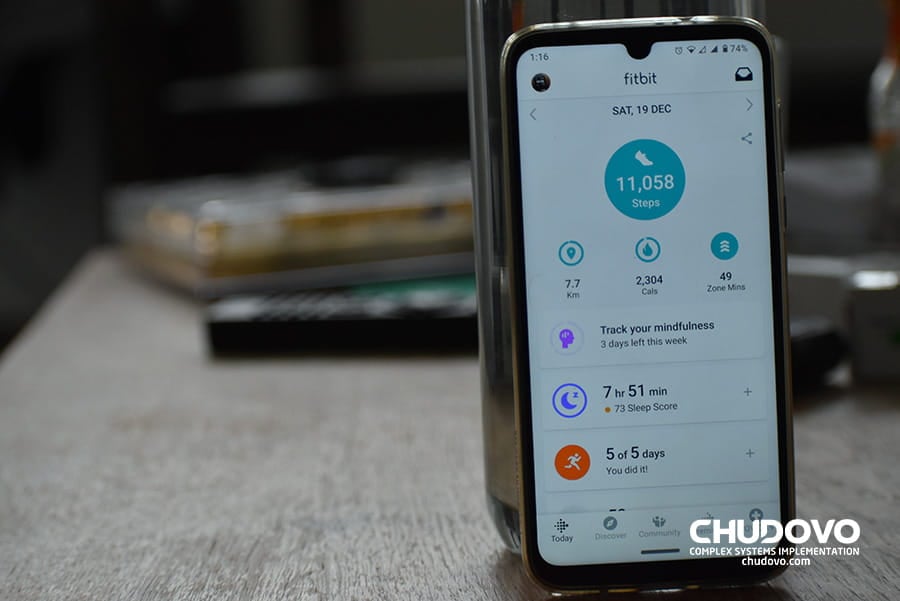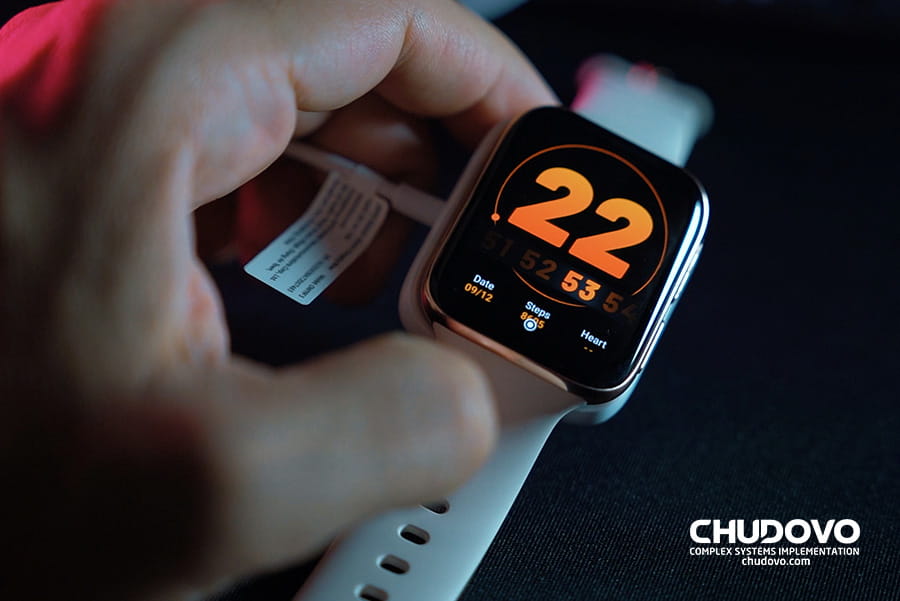Designing Vitality: Unveiling the Blueprint of Fitness App Development
In today’s ever-evolving era, fitness has become an integral part of many individuals’ lifestyles. This increased interest has made fitness apps an essential tool in today’s health-conscious world. With advancing technology, the fitness app industry is developing significantly, creating massive differences in people’s lives.
However, designing and developing fitness apps requires meticulous planning, strategic management, robust backend, and user-friendly interfaces. One should also consider the development cost and how to plan the project to ensure financial viability. Also, it should be noted that the fitness app development market is increasingly competitive, making differentiation necessary for new entrants.
Let’s look into the comprehensive development of the fitness app and its monetization model. From the initial idea and design phase to launch, this article aims to equip you with the knowledge to create and launch a successful fitness app in today’s dynamic market. Whether you’re an experienced developer or a budding entrepreneur, understanding the complexities of fitness app development is crucial. Without further adieu, let’s get started.
Table of Content

The Rising Trend and Purpose of the Fitness Apps
Over the years, we’ve seen an increase in applications for several purposes, and fitness apps are no exception. They have a vast following of loyal individuals who are careful and committed to achieving their health and fitness goals. With the convenience and personalization these fitness apps offer, people can create their workout routines, track their nutritional intake, and monitor their minutest progress. That’s not all, these apps can be connected to wearable smart devices such as watches for quick updates.
The fitness apps not only cater to individual workout enthusiasts but have also found a place in professional sports training regimes, thereby improving the development of apps for connected sports. Developing a fitness application requires a strategic approach. From the initiation of the concept to the design phase, feature integrations, and the launch, every step in the mobile app development process is essential. One needs to design and develop a user-friendly, visually appealing fitness app that serves the intended purpose.
The cost of developing a fitness app is a significant aspect that entrepreneurs and businesses must consider. Several factors influence this cost, including the features of the app, the technology stack, design complexity, and the geographical location of the development team. Understanding these costs and budgeting effectively is essential for a successful and cost-effective fitness app development process that results in the birth of a user-friendly fitness app.
The purpose of fitness apps extends beyond just making and recording workouts and metrics. They also provide companion apps for connected sports gear, augment users’ training experiences with video content, assist in schedule monitoring, and offer personalized wellness services. And as technology advances, fitness apps will evolve further, becoming an even more essential part of our fitness journeys.

The Different Types of Fitness Apps
In the competitive fitness app market, you can find different kinds of apps with dedication purposes. This allows you to download the app that best suits your needs and preferences. Moreover, having a variety of fitness apps gives you the liberty to try different apps before deciding to stick with the app that meets your expectations. Let’s look at different fitness apps prevalent in today’s market.
Workout and Exercise Apps
The first and the most familiar category of fitness apps is workout and exercise. These workout and exercise apps provide a range of workouts that individuals can perform at home, in the gym, or anywhere they prefer. They often contain video content, descriptions, and sometimes even augmented reality features to guide users through each exercise. These apps also offer workout personalization and tracking for a tailored experience.
Nutrition and Diet Apps
Nutrition and diet apps focus on assisting individuals keep a check on their food intake and maintain a balanced diet. The prevalent features include calorie counters, food databases, meal planners, and diet recommendations. Some advanced nutrition and diet apps can also analyze the nutritional value of meals and offer customized diet plans based on the individuals’ health conditions, statistics, and fitness goals. Read more about these types of applications in our article here.
Activity Tracking Apps
If you are looking for a fitness app that keeps track of your physical activity levels, the category that works the best is activity tracking apps. The category of app is designed and developed to monitor the number of steps taken, calories burned, sleep patterns, and many more. These apps also offer a feature to track your oxygen, heart, and stress levels. Access to all these essential data motivates users to make active lifestyle changes and track their progress.
Personal Trainer Apps
Last but not least, personal trainer apps aim to mirror the experience of having a personal fitness coach. They offer customized workout plans based on the user’s fitness level, goals, and preferences. These apps often feature detailed video guides, workout calendars, progress tracking, and sometimes even live sessions with certified trainers. Developing such an app involves integrating various features and technologies, which can influence the fitness app development cost.

The Blueprint of Fitness App Development
Seeing different types of fitness apps, it seems daunting to develop one and stand out in the already competitive market. However, health and fitness are becoming an integral aspect of people’s lives, and everyone is looking for an app that is easy to use but helps them meet their personalized demands and is rich with helpful features.
While there are many fitness apps, there’s still scope to merge technology creatively and well-being. And if you stick to the strategic blueprint to develop the app, from conceptualization to launch, you can create an app that people are looking for. You will have to consider the technology, time, and resources and strategically use them to get a loyal following of health and fitness enthusiasts. So, let’s look at the blueprint of fitness app development.
Understanding the Target Audience
The first step to developing a fitness app is to understand your target audience, their needs, and what they are looking for. The target audience isn’t just a group of potential app users. They’re the guide for your development process and the key to your product’s relevance in the already competitive app market.
Gaining a deep understanding of your target audience involves a deep dive into demographic and psychographic details. Demographic data include age, gender, geographical location, and level of physical activity. Psychographic data, on the other hand, offers insight into their fitness goals, lifestyle choices, motivations for using fitness apps, and their mindset towards health and wellness.
That’s not all! The tech-savviness of your audience plays an essential role in determining your app’s user interface. A younger, more tech-savvy audience is comfortable using the advanced features and integrations, whereas an older audience prefers simplicity and ease of use. So, understanding the target audience helps shape the core features, design, and technology stack of the app, ensuring it effectively meets the needs of its intended users.
Deciding the App Features
After you clearly understand your target audience, you can brainstorm the features to incorporate into your fitness app. This step gets easier now as you know the preferences of your audience.
These include workout routines, monitoring systems, social sharing, personalized content, and third-party integrations with wearable devices and, maybe, other apps. These quantifiable features motivate users to persist and reach their fitness goals. You can also integrate social sharing features that can turn fitness into a community experience, allowing users to share their progress, celebrate milestones, and even engage in healthy competition with friends.
However, the types of features you select will impact the cost of developing a fitness app, so it’s essential to prioritize based on user needs and budget constraints. For instance, complex features require more time, resources, and cost to be developed. So, it’s only thoughtful not to overload the app with features and consider the features that elevate your target audience’s experience.
Choosing the Right Technology Stack
The next factor in the blueprint of fitness app development is the choice of the right technology stack. Having the right stack is essential as it ensures excellent performance, functionality, and user experience. So what does the right technology stack mean? From the programming language and development platform to the database and API, choosing the right technology covers an expansive area.
The development platform choice – iOS, Android, or both- largely depends on your target audience. It’s crucial to understand your users’ preferences, including the type of mobile devices they use most frequently. If your audience is split between iOS and Android users, consider developing a cross-platform app to cater to both.
Programming languages are also an essential part of your tech stack. For iOS development services, Swift and Objective-C are popular choices, while Android development services typically employ Java and Kotlin. The chosen language should offer strong performance and be suited to your app’s specific requirements.
Databases play a crucial role in managing and storing user data, including personal profiles, workout schedules, progress tracking data, and more. SQLite, MySQL, and MongoDB are popular choices, depending on the scale and complexity of your data management needs.
APIs (Application Programming Interfaces) allow your app to interact with other software or services. For instance, relevant APIs will be required if your app includes third-party integrations or needs to access device features like GPS for real-time tracking.
UI/UX Design Considerations
Next on the blueprint list is the UI/UX design- a fundamental aspect of any mobile application and plays a critical role in its success, especially in the case of a fitness app. The design is not just about aesthetics. It is also about creating an engaging, intuitive, and user-friendly interface that keeps users hooked and encourages them to return regularly.
A well-planned User Interface (UI) ensures that the app is visually appealing and coherent. From colour schemes and fonts to iconography and animations, every design element should be chosen carefully. They should align with your brand identity and resonate with your target audience. The usage of vibrant and energetic colours, for instance, can evoke a sense of vitality and motivation, which is apt for a fitness app.
The User Experience (UX) is all about how the app functions. It should simplify the user’s journey from the moment they install the app to when they achieve their desired outcome, be it setting a workout schedule or sharing their achievements on social media. This implies easy navigation, logical flow, quick loading times, and an overall intuitive layout. Additionally, the placement of Calls to Action (CTAs) can influence user interaction. Well-planned, meticulously placed, and compelling CTAs can guide users through the app and prompt them to take desired actions.
Backend Development
The backend of a fitness app involves establishing servers, databases, and APIs that form the infrastructure necessary for the app’s functionality. It’s like a highly efficient control room that coordinates and manages all the app’s operations, often in real-time.
One of the critical aspects of backend development is setting up servers that host the application and handle the requests and responses between the app and the user. This includes user authentication, authorization, session management, and more. Ensuring server efficiency and responsiveness is paramount to a smooth user experience.
Another significant part of backend development is creating and managing databases. Given that, a fitness app usually deals with a large amount of data, ranging from user profiles, workout schedules, and fitness metrics to progress tracking, a robust database system is a must. It stores, organizes, and retrieves data efficiently, ensuring seamless data flow within the app.
A robust backend development ensures your fitness app is high-performing but also reliable and secure. Given its criticality, it’s essential to leverage skilled backend developers proficient in server-side languages, database management systems, and server architectures.
Testing and Quality Assurance
No fitness app can be successfully launched without testing and quality assurance (QA). This process ensures a seamless, glitch-free, and secure user experience. Functional testing checks every feature of the app to ensure proper operation.
This is followed by usability testing, which ensures an intuitive and satisfying user experience, allowing real users or professional testers to provide feedback about the app’s user interface and overall feel. Performance testing also pushes the app’s limits, checking loading times, responsiveness, and stability under heavy loads or high traffic. The app’s security is then scrutinized with meticulous security testing, looking at data encryption, user authentication, and potential vulnerabilities.
Last but not least, post-launch monitoring and user feedback analysis remain critical for continuous improvement and updating. This testing and QA process reduces post-launch problems, enhances user satisfaction, and boosts the app’s overall success.

Monetization Strategies for Fitness Apps
While developing any fitness app, it is essential to consider monetization. This factor offers a return on your investment and potentially creates a sustainable and lucrative business model. While initially high, implementing an innovative and user-friendly monetisation strategy can offset the cost of developing a fitness app. Here are some popular fitness app monetization models that can be integrated during mobile app development.
Freemium Model
The freemium model allows users to download and use the core features of the fitness app for free, while advanced features, content, or services are locked behind a paywall. This model encourages users to try out the app and see its value before deciding to pay more. It’s an adequate model, especially if the premium features are highly appealing and offer clear added value.
In-app Purchases
In-app purchases allow users to buy goods or services within the app. In the context of a fitness app, these include additional workout routines, advanced tracking capabilities, or fitness gear. This monetization model works well if the app offers high-quality, valuable extras that users are willing to pay for.
Subscription Model
Subscription-based models have become very popular in fitness apps, providing users with access to premium content or features for a regular fee. This could include personalized training schedules, diet plans, or premium video content. Subscriptions can offer a steady income stream, but the app needs to deliver consistent value to keep users subscribed.
Advertising
Advertising can also be an effective way to monetize a fitness app, especially if it has a large user base. Ads can be shown in various formats, such as banners, videos, or native ads that blend in with the app’s content. It’s essential, however, to balance ad revenue with user experience, as too many ads can lead to user dissatisfaction.

The Cost of Developing a Fitness App
Budgeting for fitness app development requires careful consideration, given the various elements contributing to the overall cost. Multiple factors influence this significant investment decision for businesses and entrepreneurs. Let’s delve into the key aspects that can significantly influence the cost of fitness app development and explore some estimated cost ranges.
The fitness app development cost is a crucial consideration, primarily driven by several elements. The complexity and the number of features like workout tracking, social sharing capabilities, and third-party integrations fundamentally influence the cost. Moreover, the cost is also impacted by the composition and location of the product and development team, which typically comprises a project manager, UI/UX designers, developers, and QA testers. Regions with higher living costs can inflate the overall budget.
The choice of the technology stack, whether iOS, Android, or both, and the use of advanced technologies such as connectivity with wearables or AR/VR further contribute to the cost. Additionally, the emphasis on delivering a high-quality, intuitive, and engaging design necessitates time and expertise, escalating the cost even further. Finally, the post-launch phase involving regular updates, bug fixes, and the potential addition of new features, forms a significant part of the cost structure, emphasizing the importance of maintenance and updates in the budgeting considerations.

Certified engineers
Convenient rates
Fast start
Profitable conditions
Agreement with
EU company
English and German
speaking engineers
Future Trends in Fitness App Development
As we look towards the future of fitness app development, several emerging trends promise to shape this domain. To begin with, augmented and virtual reality technologies are beginning to play a pivotal role in fitness app development. These technologies allow users to experience immersive, interactive workouts, transforming their fitness routines into engaging, game-like experiences.
Secondly, the rise of wearables and connected sports gear drives the development of companion apps for these devices. These apps help users monitor their progress, track their workouts, and provide real-time coaching and feedback.
Personalized workout plans, dietary recommendations, and fitness goals tailored to the user’s specific needs and preferences are becoming standard features in fitness apps. Implementing these personalized features requires robust data analysis and machine learning algorithms, which could add to the cost of developing a fitness app. The fourth trend is social integration, where users can share their progress, join workout groups, and engage in friendly competitions.
Conclusion
Developing a successful fitness app requires a deep understanding of your audience, careful feature selection, and a strategic tech stack choice. Keeping track of emerging trends and cost-effectively integrating them can result in an app that not only resonates with users but also stands out in the increasingly competitive fitness app market.
Frequently Asked Questions
What is the average cost of developing a fitness app?
The cost of developing a fitness app can vary widely based on factors such as features, development team, technology stack, and design. On average, development costs can range from $15,000 for a simple app with basic features up to $80,000 or more for a comprehensive app with advanced functionalities.
What are some popular monetization strategies for fitness apps?
Popular monetization strategies for fitness apps include the freemium model, where basic features are free but advanced features require payment; in-app purchases, where users pay for specific items or features; subscriptions, where users pay a regular fee for access; and advertising, where third-party ads generate revenue.
What are some upcoming trends in fitness app development?
Upcoming trends in fitness app development include the integration of augmented reality (AR) for immersive workouts, using artificial intelligence (AI) for personalized workout and diet recommendations, increased wearables for precise health tracking, and social features to foster a community among app users.
If you need an proven app developers at the right price, contact Chudovo Today!




